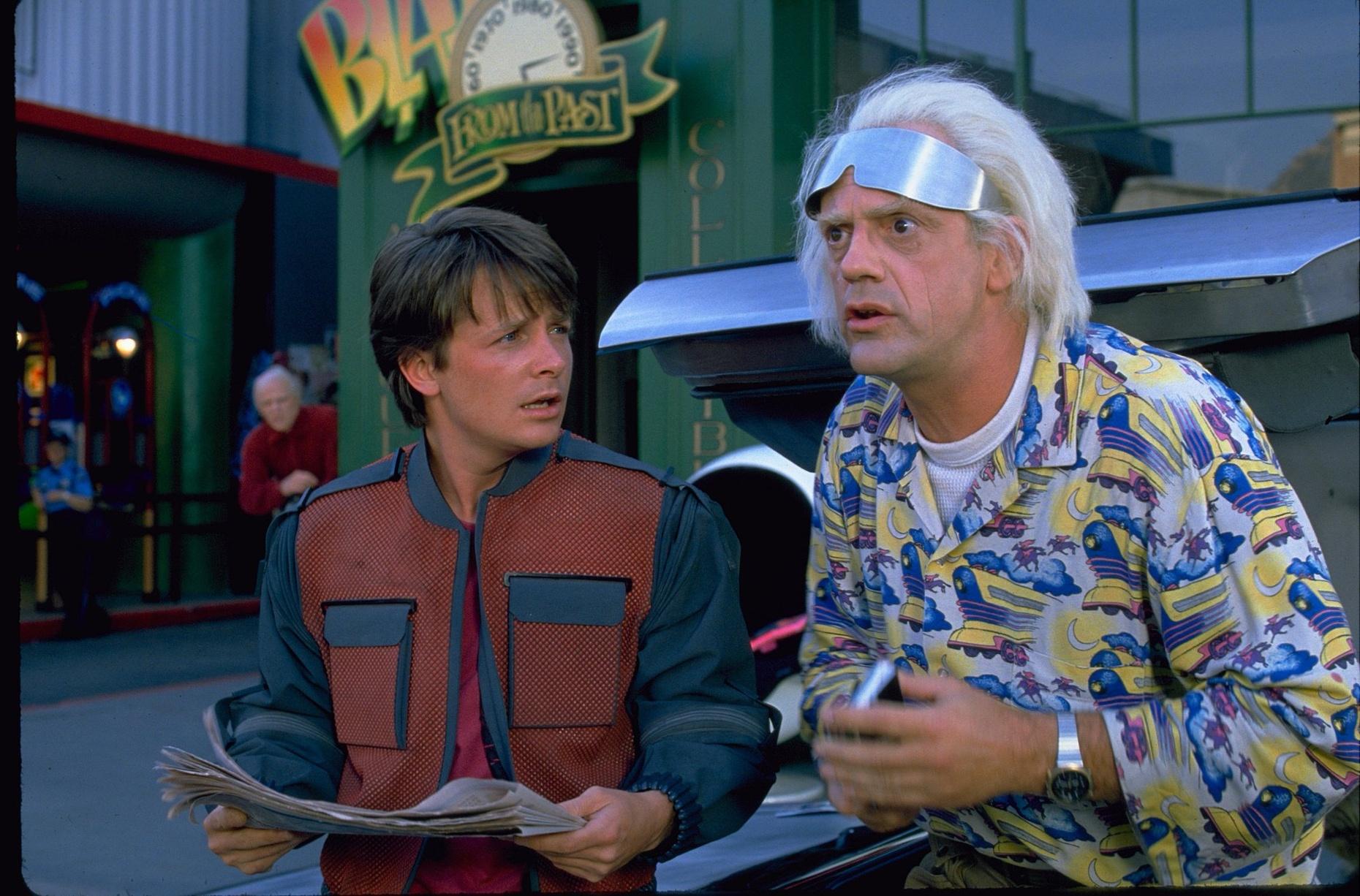Great Scott! We’re In The Future!
After a 30-year wait, tomorrow marks the day when the future finally arrives— at least,the day Back to the Future Part IIimagined back in 1989:October 21, 2015. Ohman, has the real future let us down. Flying cars are still prototypes. Therace to createhoverboards is on, but far from the finish line. 3-D movies have gotten better, but not to the point where a giant shark can leap overthe marquee of a movie theater. Nike has filed patentson a self-tightening sneaker, but there’s still no signof real-life Air Mags. Maybe the one prediction that’s closest to coming true is also the most improbable: the Chicago Cubs technically could win the World Series— although we’d be as surprised as Martyif that happens.
Thesense of disappointment is palpable, as summed upin this College Humor cartoon, where Marty and Doc end up in the real 2015.
Not to be outdone,Christopher Lloyd and Michael J. Fox filmed a series of commercials for Toyota along the same lines.
ButAdam W. Kepler arguesin The New York Timesthat the movie was prescient in the way it imagined the urban renewal of seedy downtowns, ’80s nostalgia, and how media would saturate our everyday lives, from the multiple screens in future Marty’s home to the flying drone with a digital readout of USA Today, which updates the news instantly.
I thinkwe’re all forgetting one important thing. Back to the Future Part II was a big fat disappointment, even by 1989 standards. The first film is a classic,absolutely delightful and flawless —despite being about an Oedipal love triangle and the improbable friendship between a cool teenage kid andan eccentric old scientist. But the “future” part ofthe sequel didn’t last beyond one sequence in the movie’s first act. And that entire sequence was mostly focused on gags and gadgets. WhenMarty and Doc returned home, they found themselves in a dark, dystopian 1985, which they had to fix by returningtothe timeline of the firstmovie in a caper that was all action, with none of the original’s heart and soul.
If Back to the Future Part II actually took place in 2015 as we know it, I don’t think it would’ve been disappointing at all. In fact, it would’ve been a better movie. The first film was really about the changing of social mores from the squeaky clean 1950s to the rougher, edgier ’80s. The big joke isn’t just that Marty knows the future, but that he’s got a post-’60s level of coolness and sexual confidence. But whatif teenage Marty found himself in a real-life 2015 high school? He would be baffled by cyber-bullying, shocked at sexting and Snapchatting.
Marty would be a prude, a stand-in for parents today who lecturetheir kids about howthey behaved better in their day —just like Marty’s 1985 mother didin the firstfilm, before we saw what she was really like as a teenager in 1955. That could’ve made for some veryclever social commentary, much more in line with the spirit of the original. Although, if thestoryline with his 2015daughter was anything like the one with his 1955 mother, we’d be in creepy territory indeed.
One consolation:atleast kids today aren’t dressing like this:
Our coverage reaches millions each week, but only a small fraction of listeners contribute to sustain our program. We still need 224 more people to donate $100 or $10/monthly to unlock our $67,000 match. Will you help us get there today?
